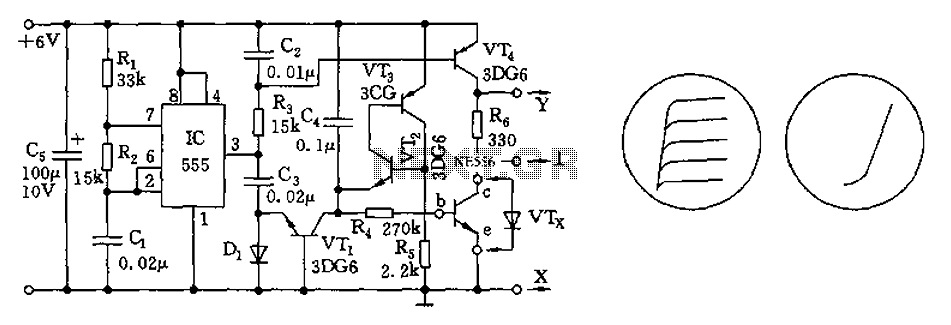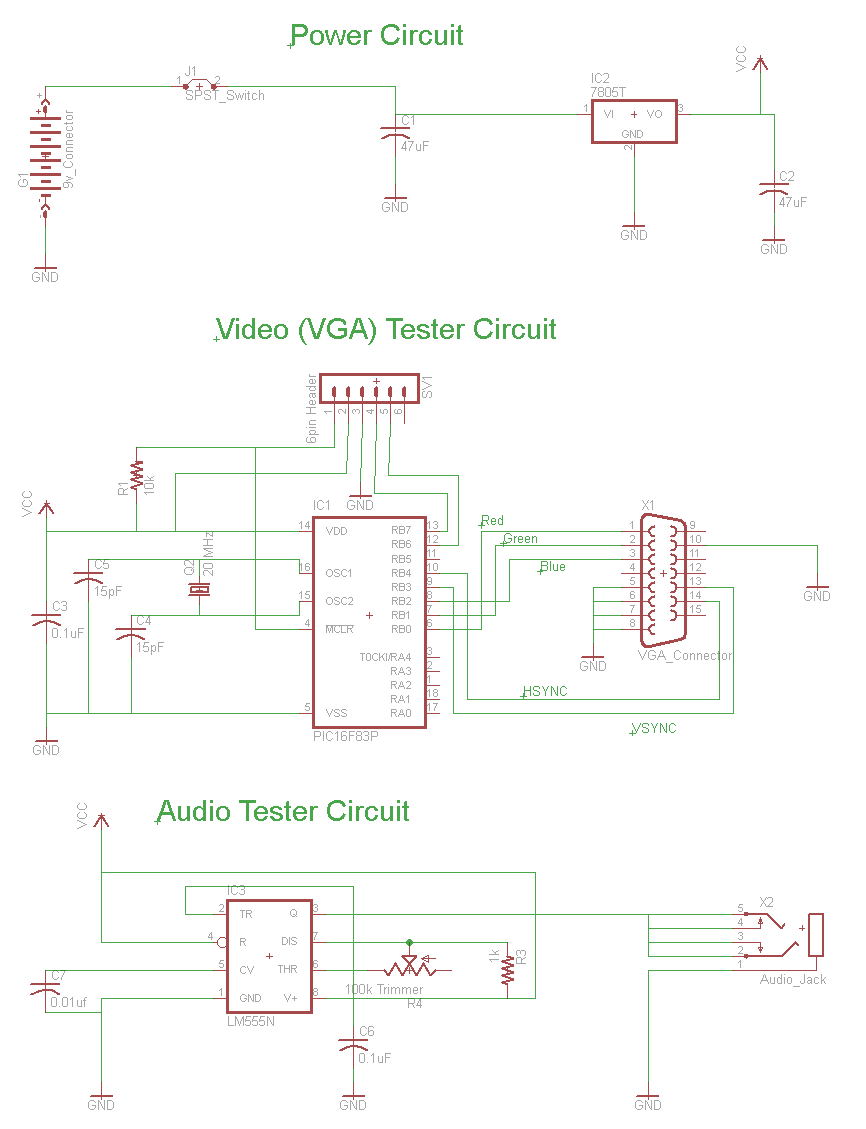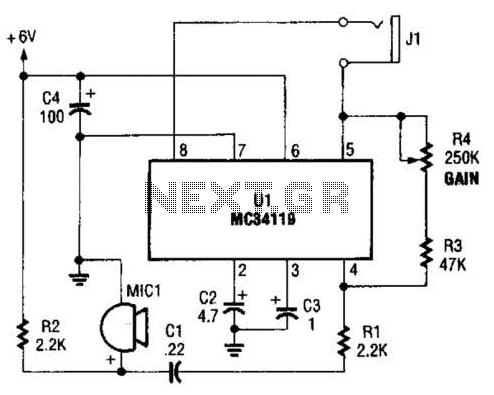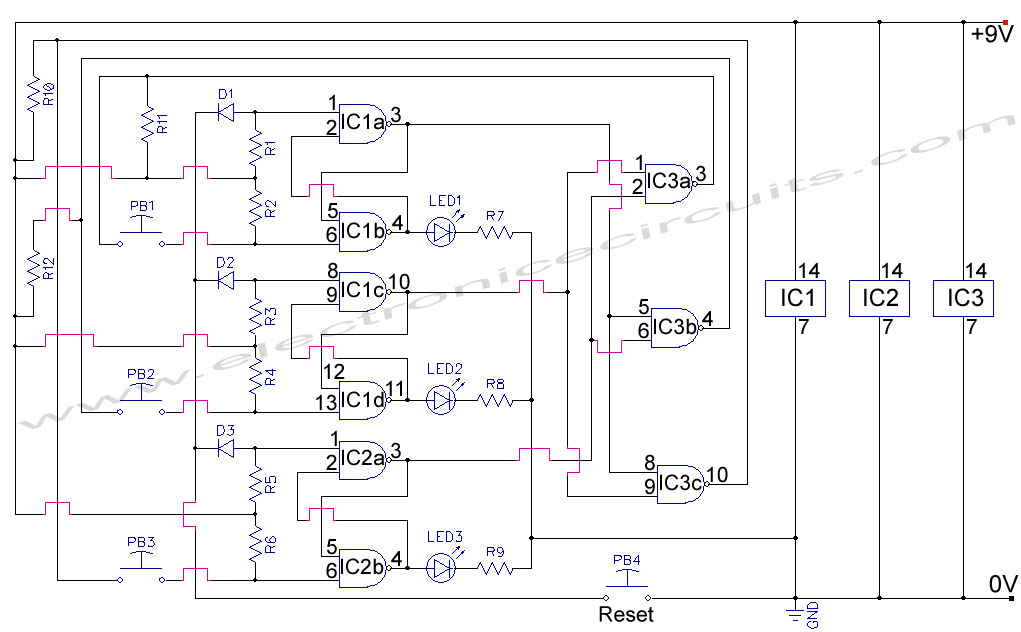
555 new digital thermometer circuit diagram

The digital thermometer consists of a temperature sensor, a single stabilizing circuit, a counter circuit, a decoding section, a driving circuit, and LED digital tubes among other components. It operates within a temperature range of 0 to 50 degrees Celsius with an accuracy of 0.1 degrees Celsius and features a digital display. The design is straightforward and user-friendly. The temperature probe utilizes the SWC digital integrated temperature sensor AD590 (or a similar model). This device serves as a temperature-sensitive element and an analog-to-digital converter (A/D) in a single unit, converting temperature readings into digital signals where the number of pulses corresponds to the measured temperature in degrees. Each pulse signifies a temperature increase of 0.1 degrees Celsius, allowing for a response range of 0 to 50 degrees Celsius, translating into 0 to 500 output pulses. The conversion speed is less than 50 ms, with the positive and negative power supply voltages specified at 12V and 2V, respectively, and an output pulse frequency of 15 kHz. Based on the measurement principles of the AD590 temperature sensor, designing the circuit diagram for the thermometer is straightforward. The IC1 (555 timer) along with components R2 and C1 forms a single stabilization circuit that generates a timing width of approximately 50 ms. This timing pulse is applied to the SWC and the K counter on pins 10 and 12. IC2, a 3-digit BCD counter, processes the output from IC1 after passing through components C3 and R5, which serve to differentiate and clear the positive pulse for counting. The SWC initiates the K-pole gate pulse after 50 ms, producing a serial pulse output that is amplified by VT1 and is then counted by pin 11 of IC2. IC3 employs a BCD to seven-segment latch/decoder/driver (CD4511), which decodes the BCD code sent from IC2 and drives a common cathode seven-segment LED digital tube for dynamic display. The main waveform diagrams for IC1 and IC2 are illustrated in the accompanying figure.
The digital thermometer circuit is designed with several key components that work in harmony to provide accurate temperature readings. The AD590 temperature sensor is integral to the system, providing a linear output proportional to the temperature. This sensor outputs a current that is converted to a voltage signal, which is then processed by the circuit.
The 555 timer (IC1) is configured in a monostable mode, generating a pulse width of approximately 50 ms that triggers the counting mechanism. The timing circuit is crucial as it establishes the frequency at which temperature readings are taken. The resistor R2 and capacitor C1 values determine this pulse width, and careful selection of these components is essential for the desired timing accuracy.
The BCD counter (IC2) counts the pulses generated by the 555 timer. The output of IC2 represents the digital value of the temperature, with each increment corresponding to a 0.1-degree Celsius change. The use of a BCD counter allows for straightforward interfacing with the seven-segment display, as it can directly drive the display through the CD4511 decoder/driver (IC3).
The CD4511 takes the BCD output from IC2 and converts it into signals that control the segments of the LED display, allowing the user to read the temperature in a clear and intuitive manner. The common cathode configuration of the display ensures that it operates efficiently with the output from the CD4511.
Overall, this digital thermometer circuit is a compact and efficient design that leverages widely available components to achieve high accuracy and reliability in temperature measurement, making it suitable for various applications in both industrial and consumer environments. As shown, the digital thermometer by the temperature sensor, single stabilizing circuit, counter circuit, decoding, driving and LED digital tube and other components. Temperatu re range of 0 to 50 degrees Celsius, 0.1 degrees Celsius accuracy, digital display. Line simple and intuitive. Temperature probe uses SWC digital integrated temperature sensor AD590 (or similar model). The device is a temperature-sensitive element and analog to digital converter (A/D) in one set, the amount of temperature is converted to digital, serial number of pulses indicates its temperature measured in degrees. Calibration Each pulse represents 0.1 degrees Celsius temperature increase, the response should be from 0 to 50 degrees Celsius from 0 to 500 output pulses.
Its conversion speed is less than 50ms, the positive and negative power supply voltage of 12V and 2V, the output pulse frequency 15kHz. According to measurement principle AD590 temperature sensor, it is easy to design a circuit diagram of a thermometer.
IC1 (555) and R2, C1 and other components single stabilization circuit generates timing width td 1.1R2C1, about 50ms shutter, added to the SWC and the K counter 10, 12 foot pole. IC2 with 3-digit BCD counter, the output of IC1 after C3, R5 differential, positive pulse as the pulse of IC2 count is cleared.
SWC add K-pole gate pulse 50ms after that start, serial pulse output, after amplification VT1, added 11 feet of IC2 counts. IC3 use BCD- seven latch/decoder/driver CD4511, the IC2 sent BCD code is decoded, and drive common cathode seven segment LED digital tube dynamic display.
Figure b is the main waveform diagram IC1, IC2s.
The digital thermometer circuit is designed with several key components that work in harmony to provide accurate temperature readings. The AD590 temperature sensor is integral to the system, providing a linear output proportional to the temperature. This sensor outputs a current that is converted to a voltage signal, which is then processed by the circuit.
The 555 timer (IC1) is configured in a monostable mode, generating a pulse width of approximately 50 ms that triggers the counting mechanism. The timing circuit is crucial as it establishes the frequency at which temperature readings are taken. The resistor R2 and capacitor C1 values determine this pulse width, and careful selection of these components is essential for the desired timing accuracy.
The BCD counter (IC2) counts the pulses generated by the 555 timer. The output of IC2 represents the digital value of the temperature, with each increment corresponding to a 0.1-degree Celsius change. The use of a BCD counter allows for straightforward interfacing with the seven-segment display, as it can directly drive the display through the CD4511 decoder/driver (IC3).
The CD4511 takes the BCD output from IC2 and converts it into signals that control the segments of the LED display, allowing the user to read the temperature in a clear and intuitive manner. The common cathode configuration of the display ensures that it operates efficiently with the output from the CD4511.
Overall, this digital thermometer circuit is a compact and efficient design that leverages widely available components to achieve high accuracy and reliability in temperature measurement, making it suitable for various applications in both industrial and consumer environments. As shown, the digital thermometer by the temperature sensor, single stabilizing circuit, counter circuit, decoding, driving and LED digital tube and other components. Temperatu re range of 0 to 50 degrees Celsius, 0.1 degrees Celsius accuracy, digital display. Line simple and intuitive. Temperature probe uses SWC digital integrated temperature sensor AD590 (or similar model). The device is a temperature-sensitive element and analog to digital converter (A/D) in one set, the amount of temperature is converted to digital, serial number of pulses indicates its temperature measured in degrees. Calibration Each pulse represents 0.1 degrees Celsius temperature increase, the response should be from 0 to 50 degrees Celsius from 0 to 500 output pulses.
Its conversion speed is less than 50ms, the positive and negative power supply voltage of 12V and 2V, the output pulse frequency 15kHz. According to measurement principle AD590 temperature sensor, it is easy to design a circuit diagram of a thermometer.
IC1 (555) and R2, C1 and other components single stabilization circuit generates timing width td 1.1R2C1, about 50ms shutter, added to the SWC and the K counter 10, 12 foot pole. IC2 with 3-digit BCD counter, the output of IC1 after C3, R5 differential, positive pulse as the pulse of IC2 count is cleared.
SWC add K-pole gate pulse 50ms after that start, serial pulse output, after amplification VT1, added 11 feet of IC2 counts. IC3 use BCD- seven latch/decoder/driver CD4511, the IC2 sent BCD code is decoded, and drive common cathode seven segment LED digital tube dynamic display.
Figure b is the main waveform diagram IC1, IC2s.





